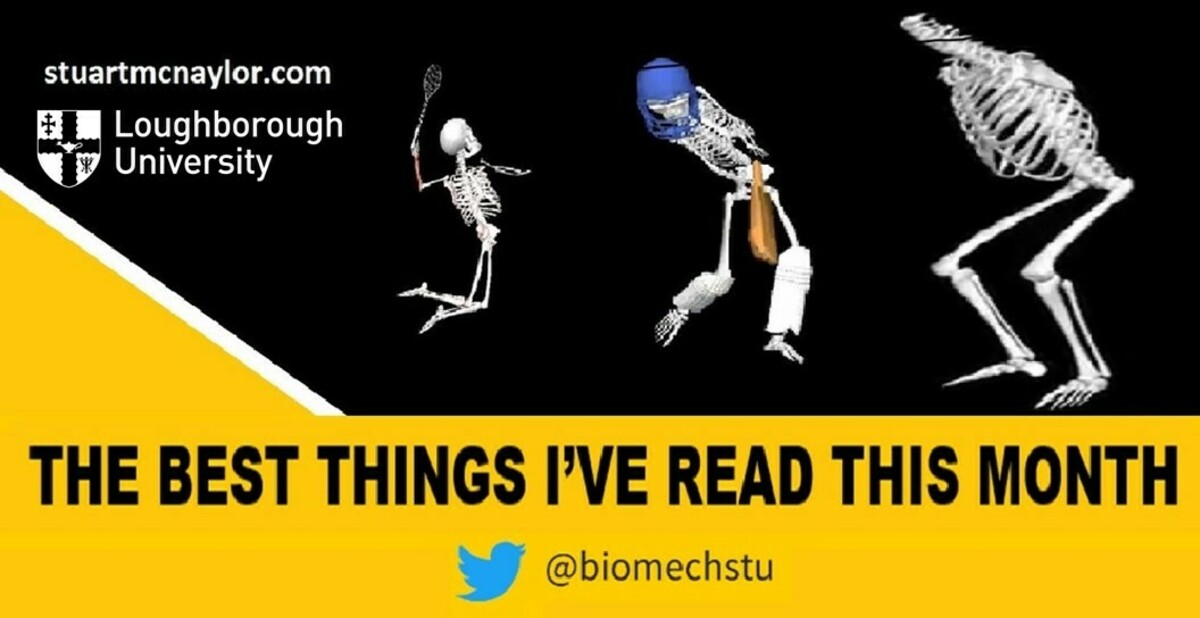
Here’s what I would like to share with you this month…
There are two sections: ‘What Have I Been Up To?’ and ‘What Have I Been Reading?’
What Have I Been Up To?
Some exciting news to start off with… I got a new job! I’m delighted to have started a Lecturer role at Loughborough University. I’ve had an amazing three and a half years at the Univerity of Suffolk and grown so much as a person and as an academic. The role really did give me everything I wanted at that stage of my career, and I’m now looking forward to the challenge ahead. I spoke a bit more about my career journey so far in the video update below:
Upskilling in academia: Back in February (I missed the newsletter last month - sorry!), I presented as part of the student session at the ISBS Mid Year Symposium. An adapted and condensed version of my presentation on strategies and principles for upskilling within academia can be viewed here , or the whole student session can be seen here by ISBS members.
Social media for academia: I also gave a presentation to our Graduate School, sharing my tips and tricks for effective social media use within academia. This is based on my experiences of running personal, journal, and society accounts over the last few years. A version of the presentation is available here .
Biomechanics at the Winter Olympics: I partnered with the Biomechanics On Our Minds (BOOM) podcast to produce a series of three videos relating to biomechanics at the Winter Olympics. We asked a group of winter sports biomechanists what researchers had learned since the last Olympics ( video 1 ), what they wished they could measure at these Games ( video 2 ), and what they thought we’d learn before the next Olympics ( video 3 ).
BASES magazine: We wrote a two-page article for the BASES magazine, detailing our cricket power hitting research from the last few years.
Throwing research: I am co-editing a Research Topic in Frontiers in Sports and Active Living on the biomechanical basis of high-speed throwing injury and performance. This includes research in sports such as baseball, softball, handball, and cricket, as well as throwing in general.
What Have I Been Reading?
Now for the main part of the newsletter…
Educated - a memoir: One of the best books I’ve ever read. I really can’t recommend this strongly enough. In Educated , Tara Westover tells her story, from an upbringing in a family of survivalists in the mountains of Idaho to her ‘escape’ and subsequent education in later years. I’m really not doing it justice in this description, but it’s gripping, incredibly well written, and extremely thought-provoking throughout.
How we learn to move: Another great book , but this one is more discipline-specific. Rob Gray provides an excellent introduction to many skill acquisition concepts, always explicitly informed by research. His storytelling abilities are inspiring, explaining complex topics through relatable and entertaining examples.
Thinking through doing: Following on from Rob’s book above, I believe a good understanding of principles related to motor control and skill acquisition is essential for a biomechanist. This paper by Carl Woods and Keith Davids explores the idea that we think through making and doing, rather than making and doing through thinking. Like anything from these authors, it’s well worth a read.
Conservation of energy: Not a read, but a short watch. This is a fantastic way for a lecturer to demonstrate the conversion between potential and kinetic energy. Always helps to add a bit of danger to the situation!
Problem-based learning: On the subject of teaching, ISBS published a series of problem-based learning session plans based on last year’s conference workshop. All eight can be accessed here , including mine using netball/basketball shooting for projectile motion.
SPM amplitude or temporal effects: As many know from my tutorial videos , I’m a big fan of the work Todd Pataky and colleagues have done in providing open-source code and resources for the use of statistical parametric mapping (SPM) within biomechanics. Their latest work includes a method for simultaneously assessing the temporal and amplitude effects. Previously, we would get significant differences and be unsure if it was due to changes in magnitude or timing of our kinetic or kinematic variables. This follows on from previous work that used separate SPM tests to assess the timing and magnitude effects.
Effects of wobbling masses: We know that soft tissue displaces relative to the underlying bone following an impact. This has been incorporated within simulation models to more accurately match experimental ground reaction forces. However, this new article shows that wobbling masses can affect joint kinetics during running, suggesting that they should perhaps be incorporated within inverse dynamics analyses. We recently suggested similar for effects of joint compliance, so it is great to see these aspects being assessed and reported.
Thank You
That’s all for this month. If you found it useful, please forward this email or share this link with friends, colleagues, or on social media.
What Have You Read Recently?
If you’ve read anything particularly interesting or useful recently, please reply to this email and let me know. I read all of the replies and I’m always looking for good reading suggestions.
Take care, and thank you for reading. I hope you have a great April!
Stuart